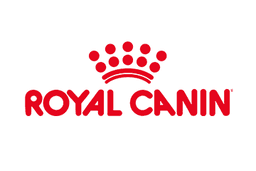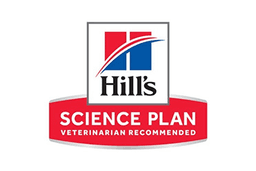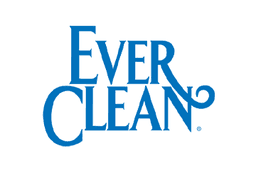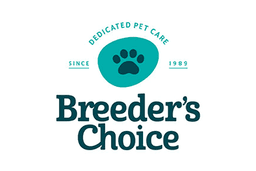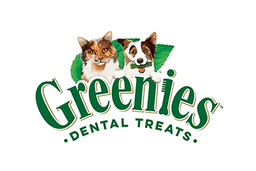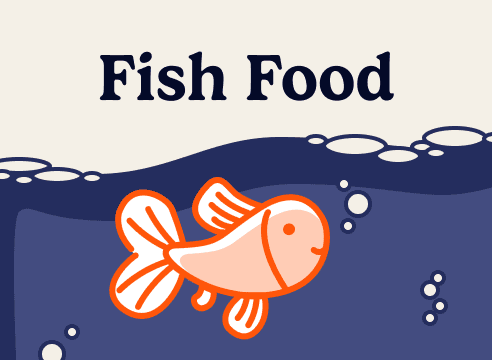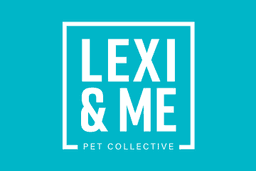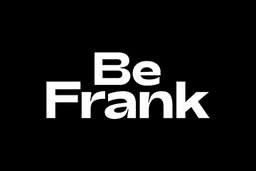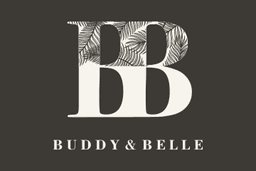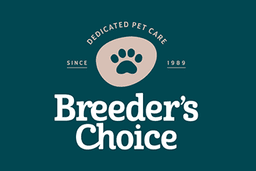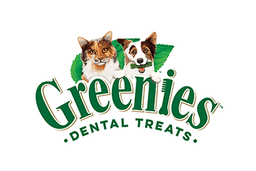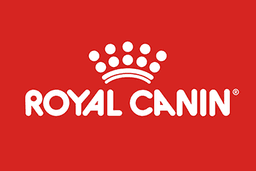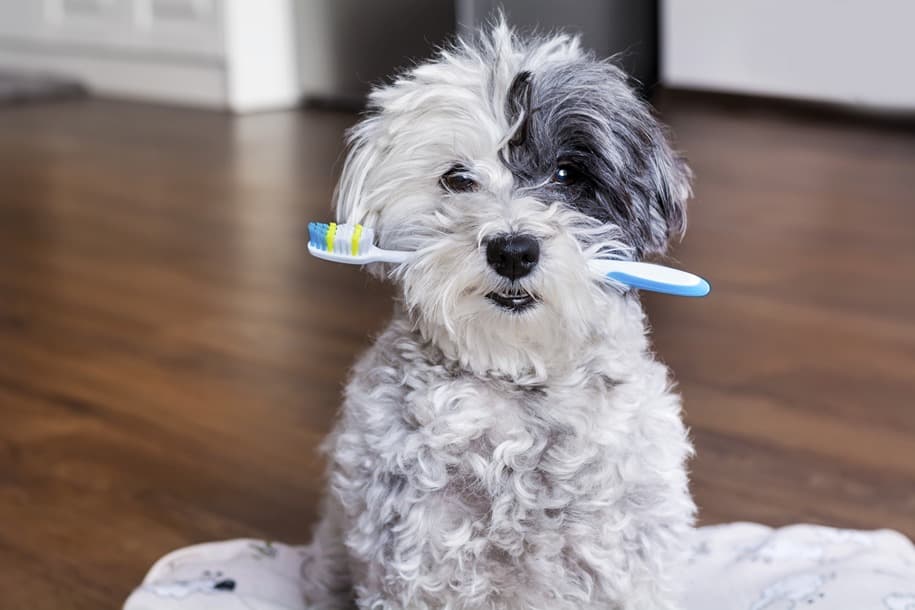Canine dental disease can affect up to 80% of dogs by the age of three, according to the RSPCA, making dog dental care one of the most frequent reasons for vet visits.
Maintaining your dog’s dental health isn’t just about shiny, clean teeth. It’s a vital part of keeping their overall health in check.
Let's look at why it's so important, and the best way to clean your dog's teeth at home.
How to Clean Your Dog’s Teeth at Home
Like many things with pets, the earlier you start, the better. A new puppy will learn quickly that teeth cleaning isn’t a terrible thing. But even if you have an adult dog you’re teaching, the method is the same.
To begin, just do short sessions. Settle your dog so it’s calm, and dip your finger into a strong beef or chicken stock – something tasty your dog will enjoy – and gently rub it over their teeth in a circular motion. If dog dental care hasn’t been part of your daily routine, your dog might find it a bit startling, and you’ll need to be careful. Keep doing this daily until the dog becomes used to having your fingers in its mouth.
When your dog is settled and okay with you poking around their mouth, wrap some gauze around your finger for the next stage, again dipping it in the stock before rubbing over the dog’s teeth. The gauze, while soft, will be a bit more abrasive, especially around the gum area. Do this daily until your dog is comfortable.
Once you get to that stage, a pet toothbrush or the softest possible human toothbrush can be used. You can also get dog toothbrushes that fit over your finger, which may be easier to use for some dogs. There are specialist pet toothpastes you can use, that are beef or chicken flavoured. Human toothpastes shouldn’t be used as they’re not formulated for animals.
Tips for Keeping Your Dog’s Teeth Clean at Home
There are a few steps you can take to maintain good dental hygiene in your dog.
Regular Brushing
Just like us, dogs need regular brushing to keep their teeth clean and prevent tartar build-up. Special pet toothbrushes and dog toothpaste are available, and they can help freshen your pet's breath. Avoid using human toothpaste as it can upset their stomach. Start slowly, letting your dog get used to the process by using your finger first, then gradually introduce the toothbrush and toothpaste. If your dog isn't a fan of brushing, tooth wipes can be a good alternative.
Dental Dry Dog Food
There are specially formulated dry dog foods that are designed to help with dental health. These foods are designed with a texture that scrubs your dog's teeth as they chew.
Dental Treats and Chews
Dog dental chews are another great option. These treats come in various shapes and textures that clean your dog’s teeth as they chew. They’re available in many flavours, so even the pickiest dogs can find something they like. Giving your dog a raw bone once or twice a week can also promote chewing and help keep their teeth clean.
How often should you give your dog dental chews?
Ideally, daily. Incorporate it into your routine at a different time than brushing for maximum benefit.
Dental Toys
Dental toys are designed to encourage chewing and increase saliva flow, which helps reduce plaque and tartar. To keep your dog interested, rotate between different toys, like rubber and rope toys, to prevent boredom.
Mouth Washes, Gels and Water additives.
Gels and mouth washes can be particularly helpful if brushing your dog’s teeth is a difficult, hit and miss process. Mouth gels can be squeezed into your dog's mouth, spreading over their teeth, while water additives can be mixed into their drinking water. All help prevent plaque and tartar build-up.

What happens if you don't look after your dog's teeth?
Neglecting your dog's dental health can lead to a range of symptoms, from mild to severe, including:
- Bad breath
- Difficulty chewing and eating
- Reduced appetite
- Pawing and rubbing at the mouth
- Drooling
- Yellow-brown tartar build up on teeth
- Bleeding gums
Get into the habit of checking your dog’s teeth once every week or two. If you notice any of these signs, it’s a good idea to get your dog to the vet. Regular checks can help catch issues early and ensure your dog stays healthy and happy.
All of these strategies contribute to how to fix bad dog breath as well as maintaining good dental health. While it will add to your daily to-do list, the benefits far outweigh the time it will take, and will help to ensure that your dog is healthy, comfortable and happy!



